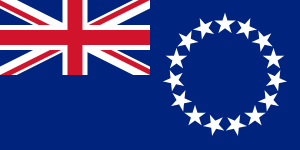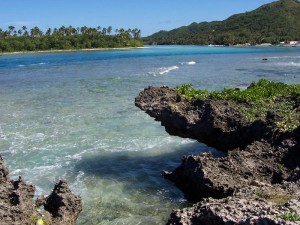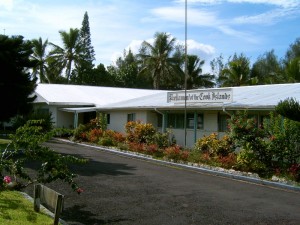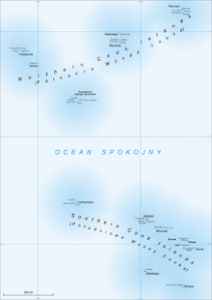Cook Islands

Cook Islands Culture and History
At the core of Cook Islands culture and history are the incredible feats of navigation and exploration that brought our people to these distant places, over the vastness of the Southern Pacific. The insight, perseverance, skill and nerve that made these journeys possible are exceeded only by the love of family and of life that bonded these ancient mariners. Man’s flight to the moon pales in complexity and risk beside their feats of navigation and discovery. From the time before these exploits down to the present day, the combination of attributes that made them possible inform and enrich life in The Cook Islands.
The Cook Islands (![]() i/ˈkʊk ˈaɪləndz/; Cook Islands Māori: Kūki ‘Āirani) is an island country in the South Pacific Ocean in free association with New Zealand. It comprises 15 small islands whose total land area is 240 square kilometres (92.7 sq mi). The Cook Islands’ Exclusive Economic Zone (EEZ), however, covers 1,800,000 square kilometres (690,000 sq mi) of ocean.
i/ˈkʊk ˈaɪləndz/; Cook Islands Māori: Kūki ‘Āirani) is an island country in the South Pacific Ocean in free association with New Zealand. It comprises 15 small islands whose total land area is 240 square kilometres (92.7 sq mi). The Cook Islands’ Exclusive Economic Zone (EEZ), however, covers 1,800,000 square kilometres (690,000 sq mi) of ocean.
The Cook Islands’ defence and foreign affairs are the responsibility of New Zealand, which is exercised in consultation with the Cook Islands. In recent times, the Cook Islands have adopted an increasingly independent foreign policy. Although Cook Islanders are citizens of New Zealand, they have the status of Cook Islands nationals, which is not given to other New Zealand citizens.
The Cook Islands’ main population centres are on the island of Rarotonga (14,153 in 2006), where there is an international airport. There is a much larger population of Cook Islanders in New Zealand, particularly the North Island. In the 2006 census, 58,008 self-identified as being of ethnic Cook Islands Māori descent.
With about 100,000 visitors travelling to the islands in the 2010–11 financial year, tourism is the country’s main industry, and the leading element of the economy, far ahead of offshore banking, pearls, and marine and fruit exports.
The Cook Islands are in the South Pacific Ocean, northeast of New Zealand, between French Polynesia and American Samoa. There are 15 major islands spread over 2.2 million km² of ocean, divided into two distinct groups: the Southern Cook Islands and the Northern Cook Islands of coral atolls.
The islands were formed by volcanicactivity; the northern group is older and consists of six atolls, which are sunken volcanoes topped by coral growth. The climate is moderate to tropical.
The 15 islands and two reefs are grouped as follows:
- Southern Cook Islands:
- Nga-pu-Toru (“Three Roots”, the eastern islands):
- Northern Cook Islands:
- Other islands:
- Aitutaki (Araura Enua)
- Mangaia (Auau Enua)
- Rarotonga (Tumutevarovaro), with the capital, Avarua.
- Palmerston Island (Pamati) sometimes grouped with the Northern Group.
- Manuae
- Winslow Reef (submerged)
- History of the Cook Islands
 Beach on Rarotonga.
Beach on Rarotonga.
The Cook Islands were first settled in the 6th century CE by Polynesian people who migrated from nearby Tahiti, to the southeast.
Spanish ships visited the islands in the 16th century; the first written record of contact with the islands came with the sighting of Pukapuka by Spanish sailor Álvaro de Mendaña de Neira in 1595 who called it San Bernardo (Saint Bernard). Pedro Fernandes de Queirós, a Portuguese captain working for the Spanish crown, made the first recorded European landing in the islands when he set foot on Rakahanga in 1606, calling it Gente Hermosa (Beautiful People).
British navigator Captain James Cook arrived in 1773 and 1777 and named the islands the Hervey Islands; the name “Cook Islands,” in honour of Cook, appeared on a Russian naval chart published in the 1820s.
In 1813 John Williams, a missionary on the Endeavour (not the same ship as Cook’s), made the first recorded sighting of Rarotonga. The first recorded landing on Rarotonga by Europeans was in 1814 by the Cumberland; trouble broke out between the sailors and the Islanders and many were killed on both sides. The islands saw no more Europeans until missionaries arrived from England in 1821. Christianity quickly took hold in the culture and many islanders continue to be Christian believers today.
The Cook Islands became a British protectorate in 1888, due largely to community fears that France might occupy the territory as it had Tahiti. In 1901 the New Zealand Government decided to annex the country despite opposition from the country’s traditional chiefs. As many of the islands were independent and ruled by local chiefs, the Cook Islands had no federal statutory law to decide the constitutional constraints regarding whether to agree to the country’s annexation. When the British Nationality and New Zealand Citizenship Act 1948 came into effect on 1 January 1949, Cook Islanders who were British subjects gained New Zealand citizenship. The country remained a New Zealand protectorate until 1965, when the New Zealand Government decided to offer self-governing status to its colony. In that year, Albert Henry of the Cook Islands Party was elected as the first Prime Minister. Henry led the country until he was accused of vote-rigging. He was succeeded in 1978 by Tom Davis of the Democratic Party.
Politics of the Cook Islands and Foreign relations of the Cook Islands
 The parliament building of the Cook Islands, formerly a hotel.
The parliament building of the Cook Islands, formerly a hotel.
The Cook Islands is a representative democracy with a parliamentary system in an associated state relationship with New Zealand. Executive power is exercised by the government, with the Chief Minister as head of government. Legislative power is vested in both the government and the Parliament of the Cook Islands. There is a pluriform multi-party system. The Judiciary is independent of the executive and the legislature. The Head of State is the Queen of New Zealand, who is represented in the Cook Islands by the Queen’s Representative.
The islands are self-governing in “free association” with New Zealand. New Zealand retains primary responsibility for external affairs, with consultation with the Cook Islands government. Cook Islands nationals are citizens of New Zealand and can receive New Zealand government services, but the reverse is not true; New Zealand citizens are not Cook Islands nationals. Despite this, as of 2011, the Cook Islands had diplomatic relations in its own name with 34 other countries. The Cook Islands is not a United Nations member state, but, along with Niue, has had their “full treaty-making capacity” recognised by United Nations Secretariat, and is a full member of the WHO and UNESCO UN specialized agencies and is an associate member of the Economic and Social Commission for Asia and the Pacific (UNESCAP).
On 11 June 1980, the United States signed a treaty with the Cook Islands specifying the maritime border between the Cook Islands and American Samoa and also relinquishing any United States claim to the islands of Penrhyn, Pukapuka, Manihiki, and Rakahanga. In 1990 the Cook Islands and France signed a treaty that delimited the boundary between the Cook Islands and French Polynesia. As competition between the US and China heated up in the South China Sea and other areas closer to the mainland, even the far off Cook Islands began to feel the results. In late August 2012, for instance, United States Secretary of State Hillary Clinton visited the islands.



